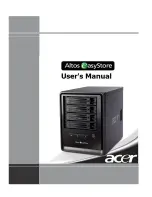
70
SuperServer 5039MA8/16-H12RFT User's Manual
OS Redirection Resolution
Use this feature to select the number of rows and columns used in Console Redirection for
legacy OS support. The options are
80x24 and
80x25
.
Redirection After POST
Use this feature to enable or disable legacy console redirection after BIOS POST. When set
to BootLoader, legacy console redirection is disabled before booting the OS. When set to
Always Enable, legacy console redirection remains enabled when booting the OS. The options
are
Always Enable
and BootLoader.
Serial Port for Out-of-Band Management/Windows Emergency
Management Services (EMS)
The submenu allows the user to configure Console Redirection settings to support Out-of-
Band Serial Port management.
EMS (Emergency Management Services) Console Redirection
Select Enabled to use a COM port selected by the user for EMS Console Redirection. The
options are
Disabled
and Enabled
.
*If the feature above is set to Enabled, the following features are available for
configuration:
EMS Console Redirection Settings
This feature allows the user to specify how the host computer will exchange data with the
client computer, which is the remote computer used by the user.
Out-of-Band Mgmt Port
The feature selects a serial port in a client server to be used by the Microsoft Windows
Emergency Management Services (EMS) to communicate with a remote host server. The
options are COM1
and
SOL
.
Terminal Type
Use this feature to select the target terminal emulation type for Console Redirection.
Select VT100 to use the ASCII character set. Select VT100+ to add color and function
key support. Select ANSI to use the extended ASCII character set. Select VT-UTF8 to use
UTF8 encoding to map Unicode characters into one or more bytes. The options are VT100,
VT100+,
VT-UTF8,
and ANSI.
















































